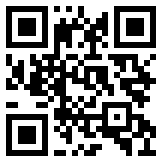The MHRA (Medical & Healthcare products Regulatory Agency) is under the jurisdiction of the Department of Health and Social Care (DHSC) in the UK.
The quickest way for offshore companies to list medical devices in the UK is to convert using an existing CE MDR certificate, or to convert a certificate or part of a technical file of a medical device certification obtained in Australia, Canada, the European Union, or the United States of America, in accordance with the draft of the proposed recognition of Australian, Canadian, European Union, and U.S. medical device certifications published by the MHRA on 21 May 2024, which is expected to be implemented in 2025, and which is expected to be implemented in 2025. is expected to be implemented in 2025.
It is worth noting that: a. To apply for registration in the UK, overseas enterprises will need a UK Authorised Representative (UKRP), who will carry out legal duties for the overseas enterprises in the UK. b. If the medical device registration certification of other proposed recognised countries is used for the conversion, the UK MHRA will not issue the UKCA certification mark. c. If the overseas enterprises do not use the certification of the proposed recognised countries for the conversion in the UK, they will need to approach the UK MHRA for the conversion of the certificates or part of the technical documents of those proposed recognised countries. to the UK, they will need to approach AB ‘Approved Body’, a third party independent certification body appointed by the UK MHRA, to apply for UKCA accreditation. d. Northern Ireland is not included in the UK medical device regulatory legislation. e. The UKCA accreditation mark will not be issued to companies that do not use the accreditation of other proposed countries for conversion to the UK.
The Brazilian Health Regulatory Agency (ANVISA) is responsible for regulating medical device activities in Brazil. Before the product registration process can begin, the product first needs to be categorised and ANVISA classifies the product into four categories i.e. Class I, Class II, Class III and Class IV, with a rise in the risk category. In order to simplify the registration process for risky devices in lower risk categories, in September 2022 ANVISA simplified the registration process for Class I and Class II medical device products, with the previous registration pathway, Cadastro, being changed to Notification.There are two pathways for registration of products in Brazil, Notification and Registro. Products with a lower risk level (Class I and Class II products) are registered through the Notification route, while products with a higher risk level (Class III and Class IV products) can be registered through the Registro route.
Current Medical Device Regulation: RDC 751-2022 (effective 1 March 2023, repealing the previous regulation RDC 185/2001)
It must be stressed that: a. foreign companies outside of Brazil need to be certified to Brazil to find a legally authorised representative (BRH), and can only be held by the authorised representative; b. the product meets the medical device regulations and electrically charged products need to be done before applying for the INMETRO certification, with Bluetooth need to be done ANATEL certification; c. the product's registration application form, instructions, labels must be provided in Portuguese, and other technical documents can be Portuguese. c. The product's registration application form, instruction manual and labelling must be provided in Portuguese, while other technical documents can be in Portuguese, Spanish or English.
TGA registration in Australia, TGA is short for Therapeutic Goods Administration, the full name of the Therapeutic Goods Administration, which is the oversight body for therapeutic goods (including medicines, medical devices, genetic technologies and blood products) in Australia. the TGA carries out a range of accreditation and supervisory and regulatory work to ensure that therapeutic goods supplied in Australia meet applicable standards and to ensure that therapeutic levels of the Australian community The TGA conducts a range of review and regulatory activities to ensure that therapeutic commodities provided in Australia meet applicable standards and that the Australian community's level of therapeutic
The regulatory framework is designed to determine the management of public health and safety, while at the same time relieving businesses of any unnecessary regulatory burdens. In fact, the regulation requires that any product must be registered through the Australian Register of Therapeutic Goods (ARTG) before it can be manufactured or sold in Australia. ARTG is a computerised database of approved products that have been found to meet human safety requirements. ARTG is a computerised database of approved products that have met human safety requirements.
For new customers, product registration and listing services are provided at a fee; for existing customers (assisted by our 510(k) agent registration), product registration and listing services are provided free of charge.
When a product is determined to be a medical device in Canada, it is necessary to submit information to Health Canada (Health Canada) for registration; it is worth noting that it is sufficient to apply for an MDEL for Class I medical devices in Canada, and an MDL for Class II, Class III, and Class IV (the applicant must have a certificate of MDSAP accreditation).

